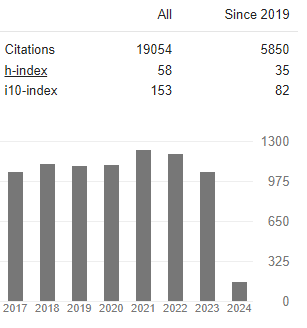Homogeneous and Heterogeneous Effect of Agricultural Inputs on Crop Productivity of The Three-Grain Crop Types in Ethiopia
Abstract
Lantesle Amsalu Abebe, Hunachew Kibret Yohannis, Anteneh Asmare Godana
Agriculture is a critical source of food and income, making it a key component of poverty reduction and ensuring food security across the globe. The sector generates 88.8 percent of the trade profit and contributes 36.7 percent of GDP. The purpose of this paper is to identify the homogeneous and heterogeneous effects of agricultural inputs on crop productivity of three-grain crop types in Ethiopia using an appropriate PMG estimator, as well as to evaluate the effect of agricultural input heterogeneity and homogeneity across individual cross-sectional units (crops). The central statistical agency (CSA) provided the data for this study, which covered the entire country from 1990 to 2012 Ethiopian Calendar (E.C). In the long run, the study found that a one percent increase in fertilizer use resulted in a 2.686 percent increase in productivity of grain crops in Ethiopia, while a corresponding increase in improved seed per hectare and land size resulted in a 48.31 percent and 10.58 percent increase in productivity of grain crops per crop type, respectively. As the value of improved seed increased by one percent with a period lag among commercial farmers, the short-term production of cereal crops increased by 30.29 percent. Grain crop productivity improved by 40.6 percent when area increased by one percent at the first difference. The results of this study show that fertilizer use, improved seed use, and cropland size made homogeneous significant contributions to improved grain crop productivity in the long run across all cross-sectional units. However, in the short run, agricultural inputs such as pesticide use and improved seed use made heterogeneous significant contributions to the first lagged value.





